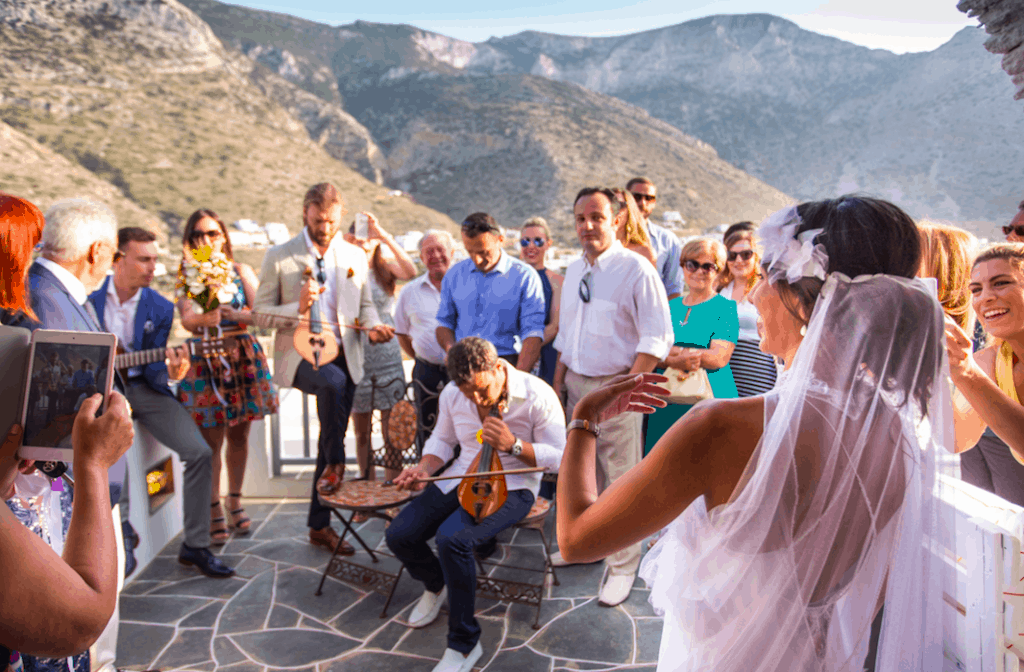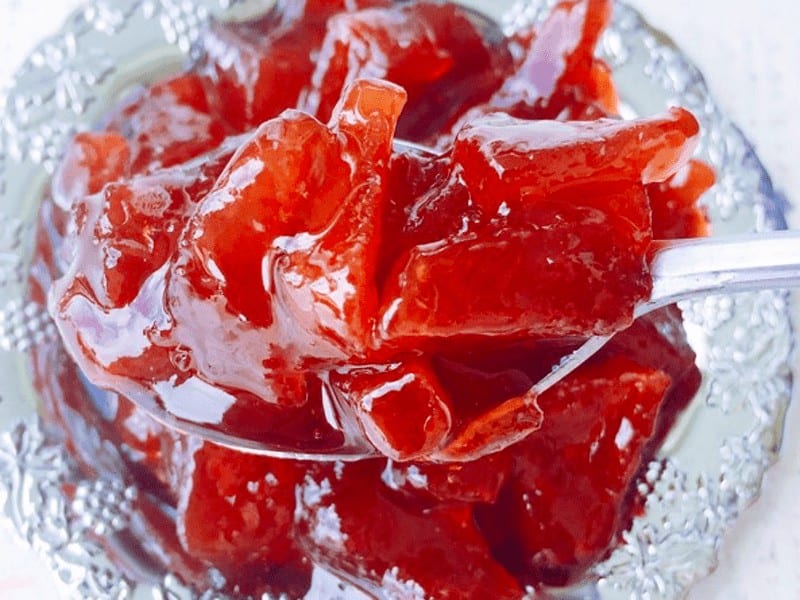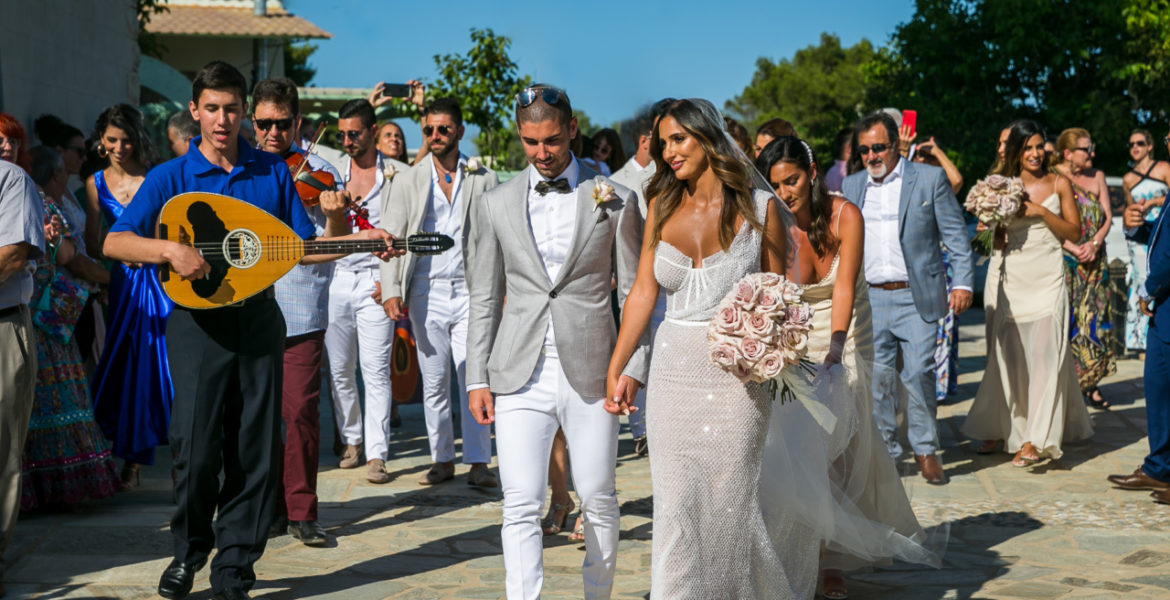- You would be hard-pressed to find a Greek wedding that hasn’t had that traditional song wafting through the house or street as bridal parties prepare for the big day.
“Simera ya, simera yamos yinetai….”
Although we now have the option of playing that song from our phones or sound systems in our homes or at a Greek island destination wedding (as has become du rigour), back in the day, bridal parties would traditionally walk with their families and guests to the church, followed by the whole village, and musicians playing that very song.

There is a myriad of varying traditions associated with Greek weddings, depending on the area of Greece.
From Epirus’s love of klarina (clarinets) and dancing the tsamiko, to guns firing at Cretan weddings. ‘My Big Fat Greek Wedding’ might have put Greek weddings on the public radar, but here is a look at some of the wonderful traditions that we love about Greek weddings.

Getting ready for the big day
In many parts of Greece, festivities for the big day begin from four days beforehand. An abundance of food, live music, and dancing all night unite the bride and groom with their families and friends.
In many areas of Halkidiki, the bride bakes special bread rolls the Thursday before the wedding which she will then throw behind her for the single young women to catch, outside of the church. It is said whoever catches these bread rolls will get married soon.
In Cyprus, there is the “stolisma”. When the bride is ready, a band plays a song that calls all the bride’s relatives to give her their blessing.
During this ritual, a red scarf is passed around the bride’s waist which symbolizes fertility. The same ritual is performed on the groom, too. Then the “Kapnistiri” takes place, which is a censer traditionally used as a smoke blessing to the bride and groom.
Na zisei i nifi kai o gambros, koumbaros kai koumbara...
The ‘koumbaro’, or best man, will shave the groom on the morning of the ceremony to signify trust. Then the close friends step in to help get him dressed. The koumbara or maid of honor leads the bridal party to the bride to help her get dressed and ready for the ceremony.
The names of all of the single ladies are written on the bottom of the bride’s shoes and tradition has it that the names that are worn off by the end of the reception will soon get married.
On the day of the wedding, the koumbaro visits the bride's house to escort her to church. But, the doors are shut! There are many traditions around his visit.
For example, he must help the bride put her shoes on.
At this point, the bride always pretends the shoes don't fit her as they are too large! Then, the koumbaro places money to make her feet slide in until the happy bride-to-be says she is comfortable in her wedding shoes!
This “show” could continue with other men in the home, such as the bride's father, who may also try his luck and see if he can make that shoe fit!
The koumbaro and koumbara will go on to become the godparents of the couple’s children.

Lambathes
The couple has two ‘lambathes’ (candles) throughout the ceremony to represent the light of Christ.

The “stefana" (crowns)
One of the most recognizable traditions of a Greek wedding are the marital crowns or ‘stefana.’ These can be made from flowers, material, gold, silver or crystals, and joined together by a strand of ribbon.
The ‘stefana’ symbolize the union of two people into a single couple.
They are swapped back and forth by the koumbaro three times and the couple wear them as they walk around the altar three times to represent their journey through life together. The priest will bless the couple before removing the ‘stefana’.
Greek church:-
The church service
There are two traditional readings that feature in Greek Orthodox weddings. The Epistle of St. Paul to the Ephesians, which highlights the joining of two people is the first and the Gospel According to St. John is the second.
This is where the miracle of turning water into wine was recounted and the reading ties in with the couple sipping from the common cup.

Koufeta
Odd numbers of Koufeta (sugar-coated almonds) beautifully packaged are given to guests right after the wedding ceremony.
They symbolize purity, fertility and the endurance of marriage. The number of koufeta must be an odd number, to symbolise that the bride and groom cannot be divided.

After the wedding
Enchanting Pelio Μountain at the southeastern part of Thessaly, women ensure they make spoon sweets (or “glyko tou koutaliou”) and treats from the trees that flourish in the area so they can have them ready for an entire year.
That way, if a wedding takes place during that year, they are well-prepared! At Zagora village, baklava was, and still is, a traditional wedding treat and its making is an important part of the whole ritual!
It comes with such a strong symbolism of the couple's sweet new life that it comes as no surprise it's not missed from any wedding.
In Halkidiki, the mother-in-law offers walnuts and honey to the bride and groom so they may have a marriage that is sweet and fertile.
Story of Stefania: Personalised Orthodox Wedding Crowns Handmade by Maria


